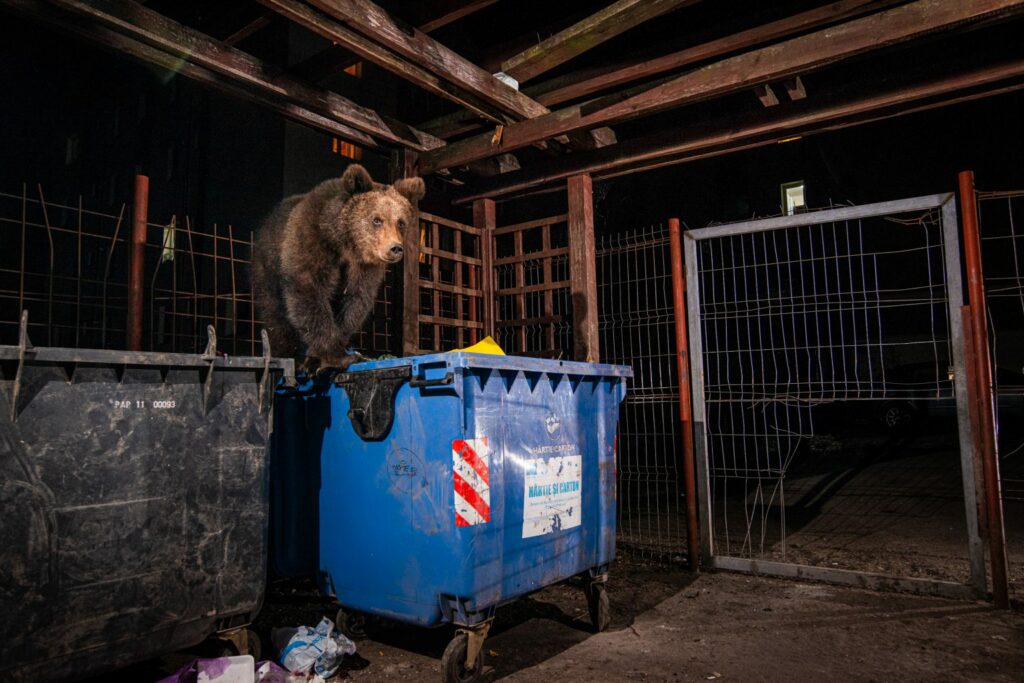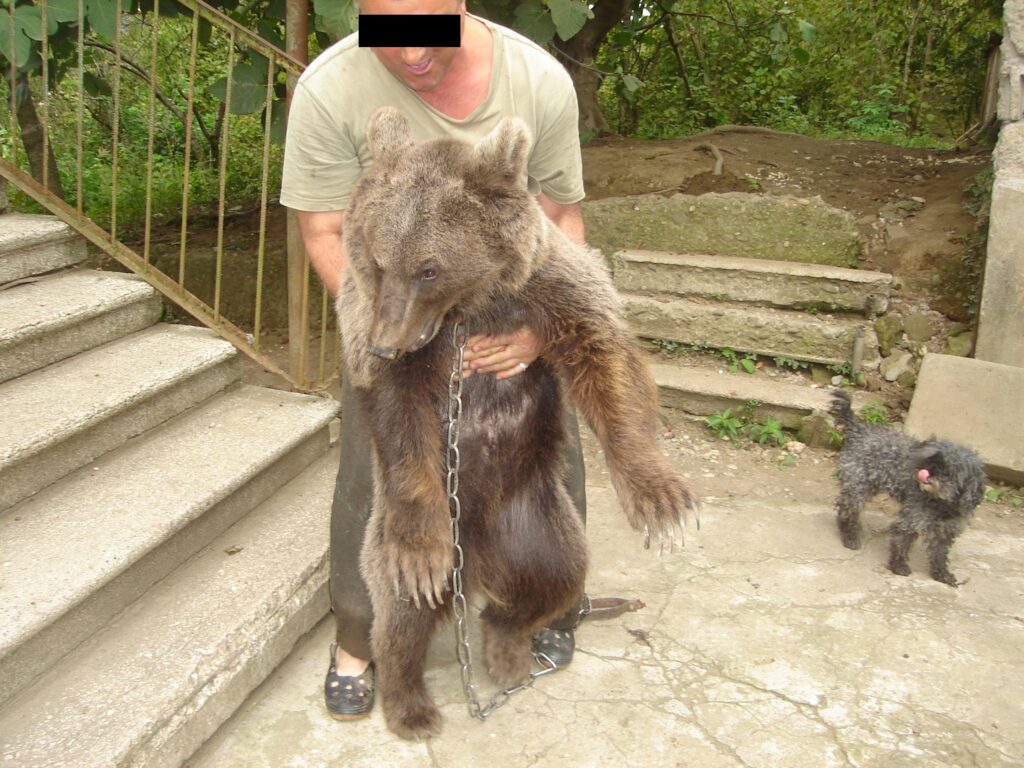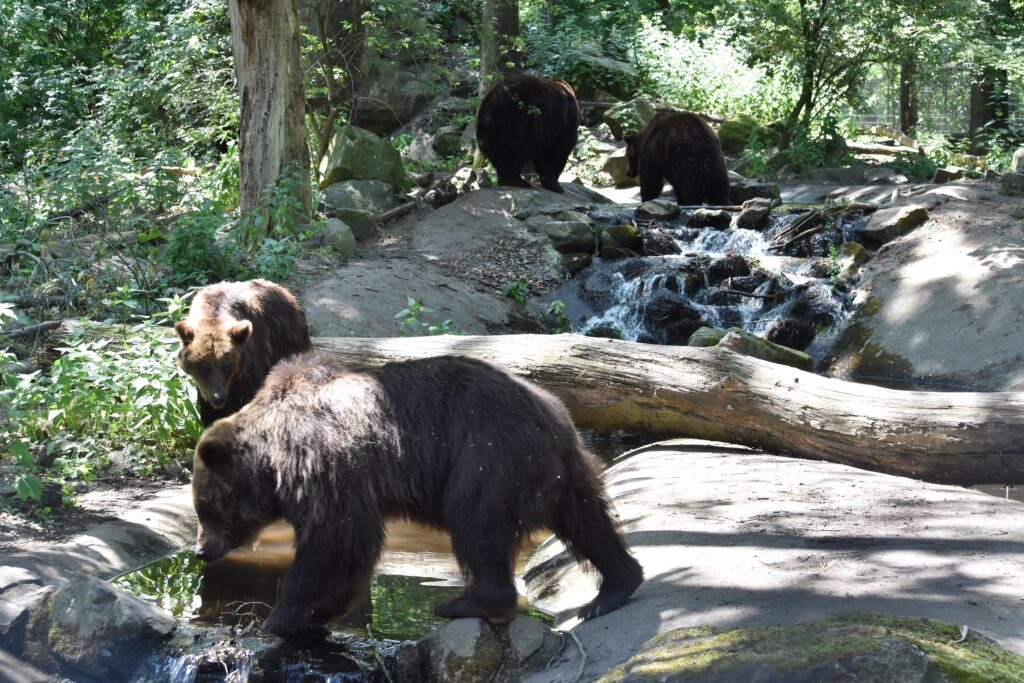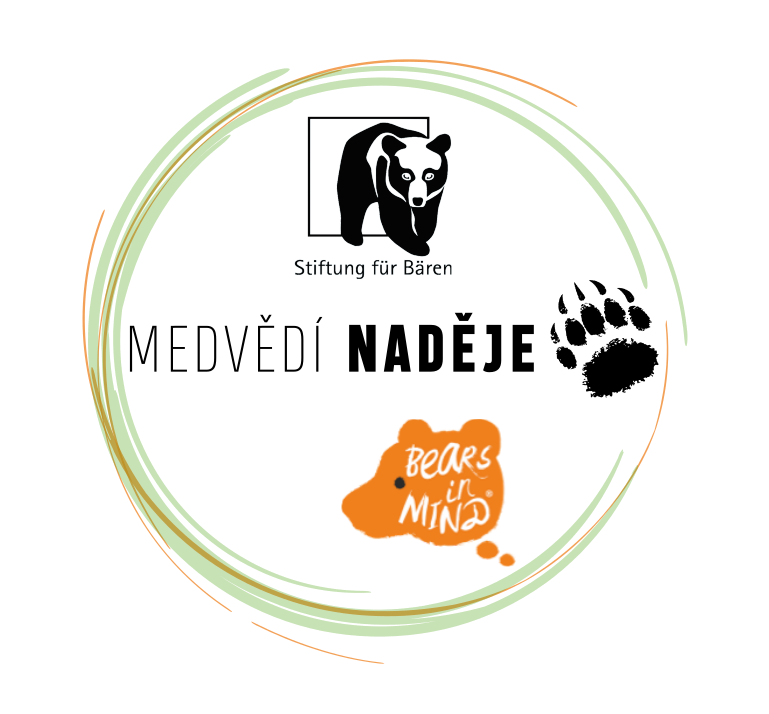Bears have been kept by humans for centuries for several, mutually not exclusive, reasons. Sometimes it has been for people’s entertainment (for example in Czech castle moats), other times to preserve the genetic diversity of the population (zoological institutions), or to keep them in captivity for the rest of their lives because it is impossible to return them back to the wild (sanctuaries, for example). There are three main reasons why captive bears cannot return to the wild. First, they get habituated to humans and once released back to the wild they seek people and their material possessions to forage or destroy, and in that way, they become ‘problem bears’ (like in the photo below).

Second, they lose their ability to feed themselves by active foraging in the wild. And third, in the wild, they do not know how to safely interact with their conspecifics and the environment. Once captive and then released, bears most likely die either by human hand or by natural causes, such as competition with other (wild) bears.
For centuries bears and other large carnivores had been kept in rather small enclosures, or even cages, to provide entertainment for people. People enjoyed the adrenalin, which a close encounter with a large and potentially dangerous carnivore, such as a bear, gave them. Bears are highly intelligent animals, and have a potential to become partially ‘tamed’. Besides the above-mentioned adrenalin, people also have perceived bears as their ‘pets’ (see example below), tended to humanise them, and have cherished such a connection between them and the large carnivore, based on the dominance-submission relationship.

However, more than 30 years ago people started exploring captive bear wellbeing, and found out that bears in small enclosures behave differently than those in the wild. They become stressed and ill, both physically and mentally, and start to show signs of the so-called stereotypic behaviours. Examples of such behaviours in bears include pacing or head-swaying, i.e. repetitive behavioural activities possessing no obvious purpose. These activities can become really dangerous to the affected individual as they can worsen not only its mental, but even its physical state. Therefore, the concept of large bear enclosures (LBE) was introduced in 1993. LBEs focus on fulfilling life and welfare needs of bears by providing space, and natural and seasonally changing stimuli following the species-specific requirements. The number of zoos and organisations worldwide complying with the LBE’s standards is constantly growing. The initiators of this project, i.e. Foundation for Bears and Bears in Mind, make good examples of such organisations. In the Czech Republic, Zoo Ostrava, for example (photo below), provides a 1-ha enclosure for Asiatic black bears and is getting closer to the LBE standards.

Foundation for Bears and Bears in Mind manage large bear parks in Germany and in the Netherlands which cover several hectares of fenced naturally forested areas with both live and dead trees, pools, streams, hiding places, or dens. In such areas bears return gradually to their natural activities and habits, and cease to display stereotypic behaviour. They even hibernate during winter months again. Feeding happens in random times of the day at randomly chosen sites of the parks. The bear parks are accessible to visitors who can observe the bears from a distance or from viewing platforms or bridges. The bears are the ones who decide whether they want to be seen. And people appreciate the behavioural range of natural activities that the bears display. In this way, both the animals and the people are happy!

